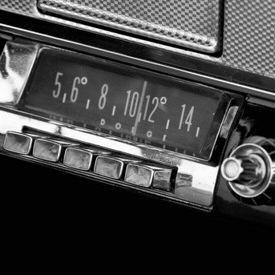
This is the next in an ongoing series of blogs examining the state of AM radio today. My first blog on this subject reviewed some of AM radio’s recent declining history plus the two most prevalent reasons behind this. However, there are other problems leading to AM radio’s decline, but there may be some hopeful solutions ahead too. The next topic needing discussion is programming. To be fair, it’s not just AM radio suffering from bad programming, but FM as well. The changes in radio that have occurred since 1996 have had more negative effects on the quality of programming, than positive. With deregulation of ownership caps that year, the march was on towards corporate broadcasting conglomerate expansion, and that required heavy financial debt burden & inflated values for radio & TV stations & licenses. Broadcasting ownership has become a ‘commodity’ as opposed to the ‘service industry’ it once was. As the ever-expanding corporate owners took on more & more debt, cost-cutting – often ruthless became the norm. Sophisticated computer technology & software replaced humans as the “voice behind the speaker.” Cost-effective programming, such as pre-recorded ‘voice tracking’ for music based radio in addition to national and regional syndication for talk based broadcasters has replaced live & local operations for much of radio’s daily air time. Online meanwhile, we can find music & talk programming from thousands of web broadcasters to suit our tastes, download or stream our favorite music, videos, podcasts & blogs. Our connected devices & computers allow each of us to experience media on a personal level by choosing what to play “on-demand”. It’s hard to compare such personal media experiences with that of a radio industry driven by profits & bottom-line as opposed to commitments of good programming & giving listeners what they want. However, such quality programming does still exist – even on the AM band. One has to dig hard & deep to find quality radio on either AM or FM, but it does exist albeit not always to individual personal tastes.
In major markets, there’s only so much room for the most successful of AM broadcasters: those with all-news, news-talk or sports-talk formats. To attempt survival with today’s media choices, urban AM broadcasters increasingly have strived to serve narrow-appeal or specialty audiences of no interest or unprofitable to FM operators. Syndicated paid or brokered Christian religious talk is the oldest narrow-appeal example of today’s AM radio scene & remains profitable. Most Spanish, ethnic programming or foreign-language stations targeting specific minorities also do well at serving their intended listeners. Some AM’s have become strictly ‘brokered’ with programmers paying for air time, then selling advertising to support their mostly talk-based programs. A few adventurous city AM’s have chosen to serve narrow-appeal music fans with alternative music or oldies-based formats targeting seniors. These AM oldies outlets are often airing 50’s, 60’s & 70’s music no longer appealing to FM classic hits & classic rock broadcasters seeking younger, and presumably more profitable demos. Much of this music even SOUNDS better on a well-maintained AM with well-adjusted audio processor! Seniors are the demo most comfortable with tuning & listening to an AM stations, but are overlooked in the ratings/profit scramble that defines today’s on-air broadcasting. However, the ratings-based “game” that profitable broadcasting is based upon, doesn’t look kindly on most urban AM’s. These stations get squeezed out by successful, popular FM’s & well-funded & operated AM outlets based on live, local news/talk or endless syndicated sports & talk programming from the major syndicators. To succeed, programming to narrow-appeal, smaller audiences needs to translate into sales to interested advertisers that might be motivated to reach a specialty listener, provided the ad rates are reasonable & provide some return. It’s a tricky, skilled game pursuing just the right format, audience size & market tactics to survive in a multi-station region such as the Puget Sound cities comprising the metro area. In spite of this, a number of metro AM’s manage to survive in the large rural centers of the Pacific Northwest & beyond.
To succeed with AM in a single-station, small or medium market requires a much different approach. Penetration of high-speed wireless access & Internet speeds are not always on par with that of the large cities. Rural & semi-rural listeners in a small market don’t always have affordable, reliable or fast access to these. That provides traditional opportunities for broadcasters – both AM & FM. Reliance on local broadcasters for basics such as weather, news, some music & entertainment & perhaps sports broadcasts for local high school or junior teams makes the old full-service format a viable option. However, in order to keep costs to a minimum, a number of these fill their non-drive-time broadcasting with syndicated, canned programming. Others prefer hard-drives of music serving a broad audience demo with occasional imaging that may or may not harmonize with the program format offered. In spite of these necessary shortcomings, small-market AM’s can survive for savvy operators with a ‘sharp pencil’ albeit at the expense of quality or original programming.
Whether an urban AM operator with many FM & AM competitors, or a small-market standalone or AM/FM combo, programming will continue to be one of the keys to survival in spite of a bleak future for the medium. AM stations have an opportunity to succeed by daring to do something different with their programming with an eye to tomorrow. However, it will take more than a winning programming formula for AM stations to face an ever-increasing amount of hurdles & challenges that are destined to make it obsolete. Our series on the state of today’s AM radio will look at other key factors in the survival game – such as FCC regulations, technical advances that work both for & against AM, & taking advantage of AM’s uniqueness to maintain survival & hopefully – success.


Some comments may be held for moderation. (New users)